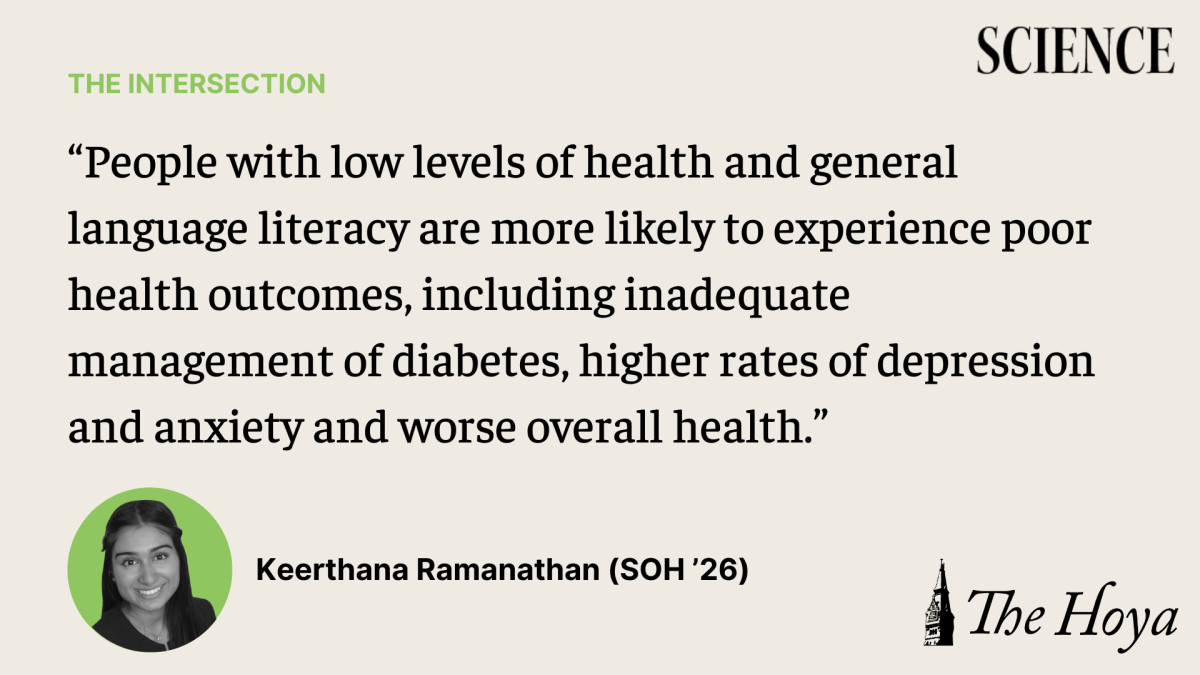“It’s not a disease; it’s illiteracy,” the doctor I was working with said after I asked him for help with a patient’s medications.
I was stunned by this diagnosis.
I had just finished working with a patient who came in to review his medications for hypertension, or high blood pressure. When I asked him to confirm the names of the medications he took, he said he could not do it. I never considered that he might have an additional diagnosis: illiteracy.
Although this diagnosis took me aback, it is an incredibly common one. According to the National Center for Education Statistics, around one in five U.S. adults have a “below basic” level of functional English literacy. Functional literacy is defined as “understanding, evaluating, using and engaging with written text to participate in society, to achieve one’s goals and to develop one’s knowledge and potential.”
At low levels of functional literacy, people can recognize basic sentences, read short paragraphs, and locate single pieces of information. However, at this level, people struggle with integrating multiple pieces of information and thoroughly understanding the English language itself.
Low literacy levels are especially pronounced in immigrant populations, particularly non-native English speakers. Out of non-U.S.-born adults, around 34% possess low levels of functional literacy.
This veiled illiteracy problem has serious implications, including barriers to healthcare. For example, for a patient with a low level of literacy, the directions on a medication bottle may be difficult to understand, therefore impacting their ability to take a potentially life-altering medication. It may be difficult to fill out medical insurance paperwork or understand the information provided in a medical brochure. All of these essential steps to attaining care are rendered significantly more difficult for people who lack literacy.
In a context that is specific to healthcare, health literacy, as defined by the Healthy People 2030 initiative, involves using literacy skills to directly inform health-related decisions and actions. To be health literate not only requires basic literacy skills but also the ability to be able to navigate the complex U.S. healthcare system and fully participate in the management of your health.
People with low levels of health and general language literacy are more likely to experience poor health outcomes, including inadequate management of diabetes, higher rates of depression and anxiety, and worse overall health. Though other factors likely play a role in poor health outcomes, including low socioeconomic status, race, and gender, illiteracy is not as commonly considered a cause of health inequity.
Central to the issue of poor literacy is the stigma that surrounds it. According to Barry Weiss, a physician at the University of Arizona, doctors routinely overestimate a patient’s literacy level, assuming that they know more than they truly do. Therefore, a patient might struggle on their own to understand a diagnosis or how to take a particular medication.
Illiteracy is also a hidden diagnosis, difficult for providers to recognize, because patients may feel shame when they experience poor literacy, forcing them to hide it. This has facilitated what many researchers have dubbed a silent epidemic. According to Dr. Ruth Parker, a professor of medicine at Emory University, speaks about the incredibly strong and profound emotion of shame, perpetuated in the healthcare system because “in our society, it is very embarrassing not to know. Nobody wants to look dumb, especially not in front of their doctor.” In one study, out of all patients surveyed who experienced low literacy, almost 70% did not tell their spouses and 19% never told anyone, including their doctors. For this reason, illiteracy can be difficult for physicians to recognize, therefore impacting the care a patient receives.
Because of illiteracy’s hidden prevalence, experts are calling for universal precautions to be put in place. These include translating medical jargon into simpler phrases, focusing only on two or three key pieces of information, and using teach-back techniques, which is when providers ask patients to repeat instructions back to them as a way to test a patient’s understanding. In our current era of 15-minute appointments, universal screening is an efficient and easy way to recognize if a patient may be illiterate, which can inform crucial decisions regarding care. Other experts support the idea of screening for literacy in medical appointments or hospital visits, similar to routine vital sign screenings.
To ensure that everyone has the opportunity to be an agent of their own healthcare, it’s time we start combatting this epidemic of illiteracy.









